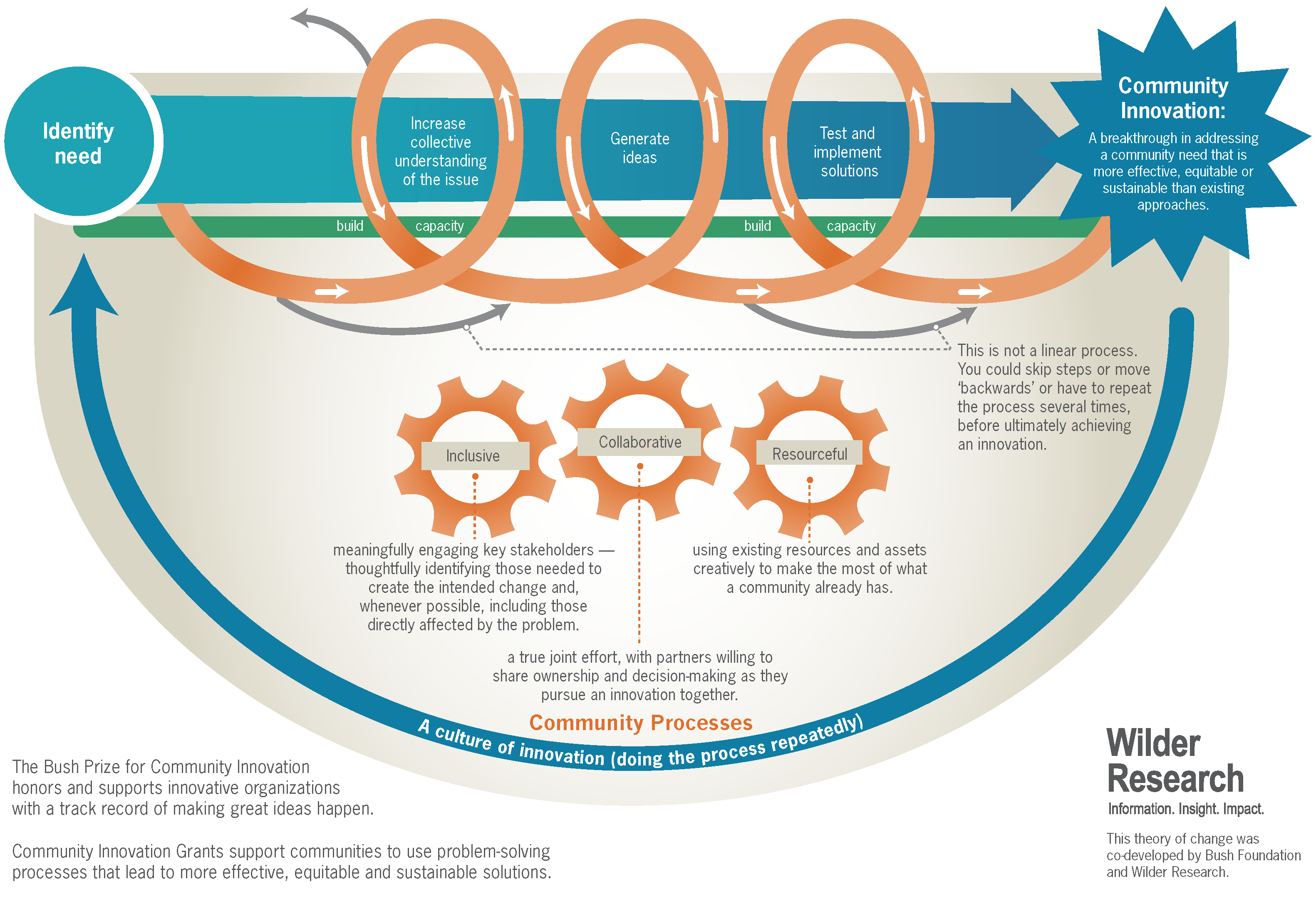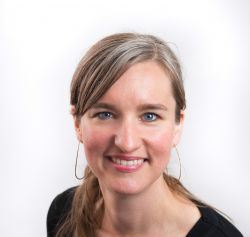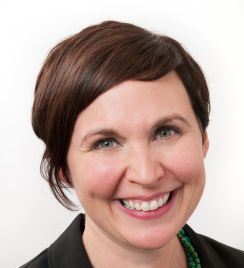From Good Idea to Problem Solved: Funding the Innovation Means Funding the Process
Good ideas for solving our toughest social problems come from a variety of places. But, we need more than just good ideas – we need transparent and thoughtful ways to get community buy-in and a wide variety of perspectives to make those ideas a reality.

For a cautionary case in point, take the origin story (later chronicled in the book The Prize) of the ill-fated attempt to transform the failing Newark public schools. A prominent governor, mayor and, later, an ultra-wealthy tech mogul, hatched the idea to radically transform the schools in the back of a chauffeured S.U.V. Commentary suggests that these leaders did not consult community stakeholders about the plan, only half-heartedly seeking community input much later in the process. As one community member put it to these leaders, “You have forced your plans on the Newark community, without the measure of stakeholder input that anyone, lay or professional, would consider adequate or respectful.” To some observers, it’s no surprise that without initial community buy-in, nor a transparent process and over $100 million later, the plan ultimately crashed and burned.
But, let’s not throw stones at glass houses. The Newark example is indicative of a larger pattern especially familiar to those of us in the field of philanthropy. We’ve learned that lesson the hard way, too. Many of us have been involved in (well-intentioned) backroom and ivory tower deals with prominent community leaders to magically fix community problems with some “good ideas.” Sometimes, those ideas work. But a lot of times, they don’t. And unfortunately, we often chalk these failures up to innovation simply being a risky endeavor, comparing our social innovation failure rates to the oft-discussed (maybe even enshrined?) business or entrepreneurship failure rates. What’s more, we almost never actively, sincerely discuss and learn from these failed endeavors.
But social innovation failure often comes at a cost, leaving behind disillusioned community members, bad outcomes for some of our most vulnerable, and lots and lots of wasted dollars that could have gone to something better. Take the Newark example: the failed attempt to transform the schools created massive civic disruption, re-awakened historic hurts and injustice and will likely leave community members even more skeptical of any future efforts to improve the schools.
Through our work at the Bush Foundation, we’ve learned that truly good ideas—those that will really have a sustainable impact—are often created in deep partnership and trust between organizations, leaders, and—most critically—the people most affected by a problem.
But, that kind of deep community partnership and transparency takes a lot of work, time, and attention. And, most everything that takes a lot of work takes some funding.
That’s why we created our Community Innovation programs at the Bush Foundation in 2013: to fund and reward the process of innovation—the process of solving problems. While the emphasis in innovation funding is often on “early stage” organizations or projects, we joke that we are a “pre-early” funder or that we fund “civic R & D.” We provide funding for organizations to figure out what problem to address in the first place, to get a better understanding of the problem, to generate ideas to solve the problem, and then, after all that work (and maybe having to revisit some of the earlier stages along the way), the organization might be ready to test or implement a good idea. See how we depict that “pre-early” problem solving process here.

Most importantly, throughout the innovation or problem-solving process, we also look for particular values to drive the organization’s approach: Is the organization genuinely and deeply engaging the people most affected by the problem? Is the organization working in deep partnership with other organizations and leaders? Is the organization making the most of existing resources?
Let’s bring it to life. Here are three examples of the 150+ organizations we’ve funded to engage in a process to solve problems in their communities:
- World Wildlife Fund's Northern Great Plains initiative is bringing ranchers, conservationists, oil business developers, and government officials together to create a vision for the future of North Dakota’s badlands and a shared energy development plan that protects this important landscape.
- PACT for Families Collaborative engaged truant youth, their parents, education staff, and service providers to understand barriers to school attendance and redesign services and test strategies for positive, sustainable solutions to truancy in western Minnesota.
- Pillsbury United Communities is using human-centered design processes to engage North Minneapolis residents to address their neighborhood’s food desert and create North Market: a new grocery store managed in partnership with a local health clinic that will also be a clinic, pharmacy, and wellness education center.
Our grantees and partners are teaching us a lot about what it takes for communities to solve problems. One of the biggest things we’ve learned is that collaborative projects often take far more time than anyone initially expects, for a variety of reasons. Over the past few years nearly a third of our grantees have requested more time to complete their grants, which we have readily agreed to.
For example, the Northfield Promise Initiative is a highly-collaborative, cross-sector, community-wide effort to address education disparities in Northfield, Minnesota. The initiative utilizes action teams composed of diverse stakeholders to drive its work. Early on in the project they decided to stagger the rollout of the teams rather than launch them all at once. That allowed them to take more care in composing and launching each team and allowed interested stakeholders to engage in multiple teams. In addition, later teams could learn from the successes and challenges of the earlier ones. As the grantee put it, “Partners felt strongly that it is important to give the process this extra time to ensure that all the different community voices and insights have been included (thereby maintaining this as a community-owned initiative).” We gladly extended their grant term from two years to four years so that they could spend the time they believed necessary to lead the problem-solving effort thoughtfully and inclusively.
For more helpful examples, here are a couple of resources to explore:
- One of our innovation programs is an award for organizations that have a track record of solving problems with their communities, called the Bush Prize for Community Innovation. Together with our evaluation partner Wilder Research, we created a report about some of our Bush Prize winners that digs into specific conditions, methods and techniques that appear to help organizations innovate.
- We believe storytelling and transparency inspire innovation. Our grantees openly share what they’re learning as they pursue solutions to community problems in grantee learning logs. The learning logs also include references to specific techniques and methods the organizations use to pursue innovation.
As funders, we also have a role in the innovation process that goes beyond writing the check. By virtue of our relationships and portfolios, we have a bird’s eye view of the field. By opening up what we are learning, we hope to build trust with our stakeholders and help others build on our work, hopefully leading to more and better future innovations.
This post is part of the Funding Innovation series, produced by Foundation Center's Glasspockets and GrantCraft, and underwritten by the Vodafone Foundation. The series explores funding practices and trends at the intersection of problem-solving, technology, and design. Please contribute your comments on each post and share the series using #fundinginnovation. To view more posts in this series click here.
Mandy Ellerton and Molly Matheson Gruen joined the (Archibald) Bush Foundation in 2011, where they created and now direct the Foundation’s Community Innovation programs. The programs allow communities to develop and test new solutions to community challenges, using approaches that are collaborative and inclusive of people who are most directly affected by the problem.


